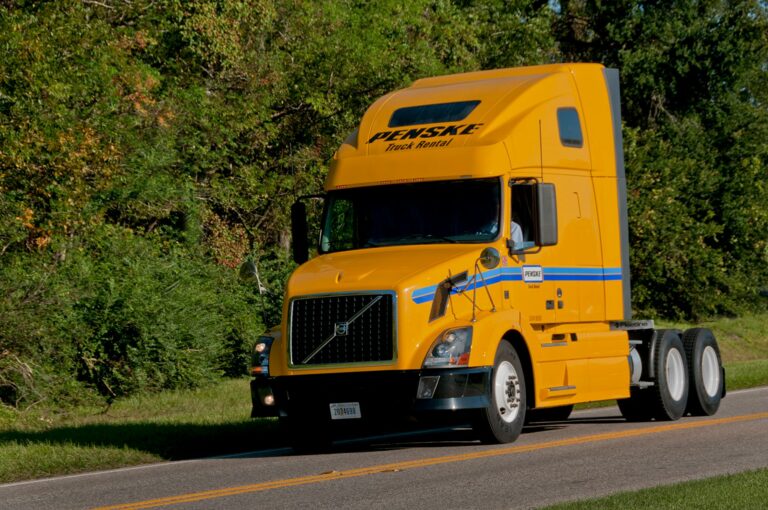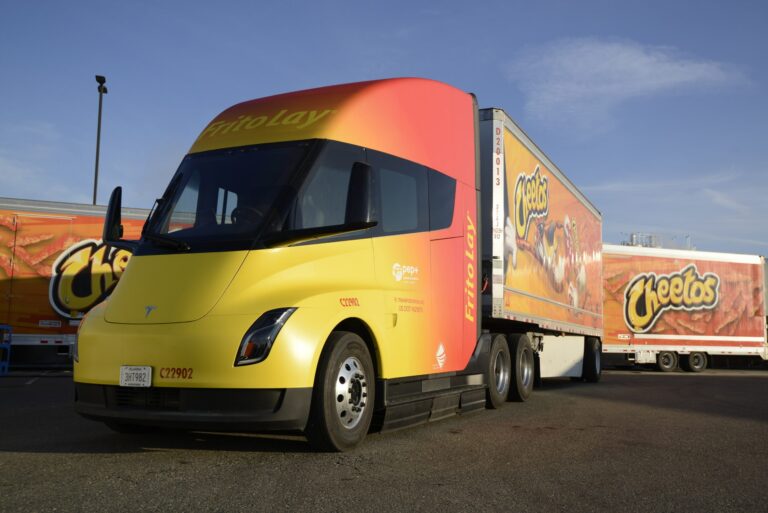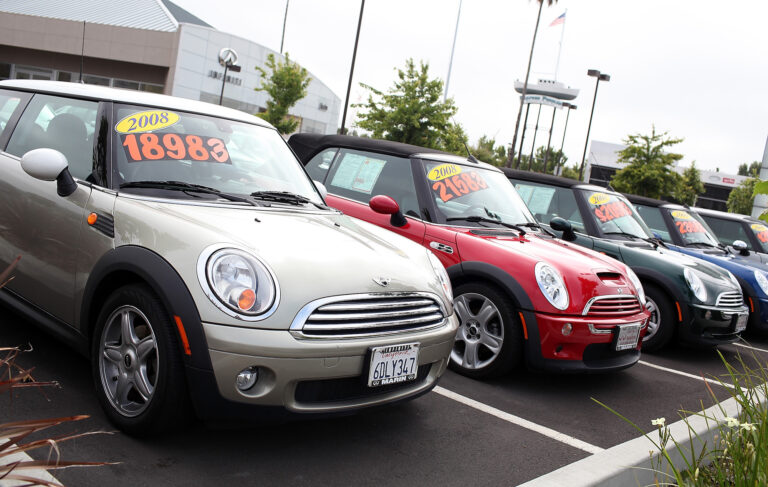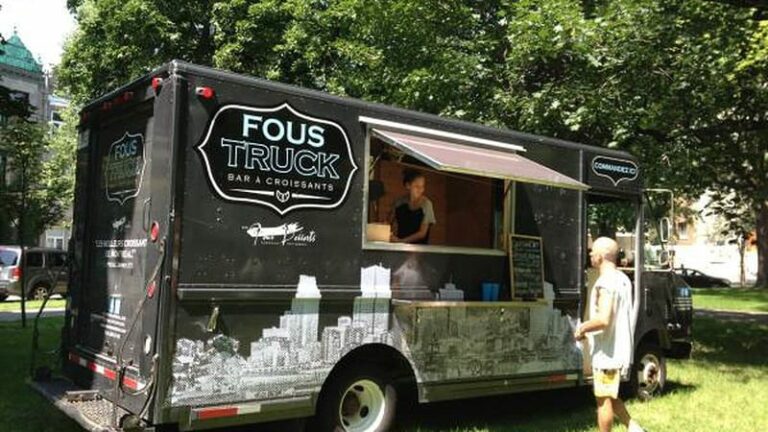What Is The Classic American Semi Truck?
What Is The Classic American Semi Truck? cars.truckstrend.com
The rumble of a powerful diesel engine, the glint of chrome reflecting sunlight, and the sheer imposing presence on the open road – these are the hallmarks of the classic American semi truck. Far more than just a means of transportation, these magnificent machines are icons of American industry, freedom, and the hardworking spirit of the men and women who drive them. They represent a golden era of trucking, a time when form and function converged to create vehicles that were not only incredibly capable but also deeply personal extensions of their operators. This article delves into what defines these legendary rigs, their enduring appeal, and why they continue to captivate enthusiasts worldwide.
The Enduring Image: Defining the Classic American Semi
What Is The Classic American Semi Truck?
When one pictures a "classic American semi truck," a very specific image comes to mind. Unlike their European counterparts, which often feature "cab-over-engine" designs for compactness, the quintessential American classic is almost always a "conventional" or "long-nose" truck. This design places the engine out front, beneath a long, often elegantly sculpted hood, offering better ride quality, easier engine access for maintenance, and a certain imposing aesthetic.
Key defining characteristics include:
- Long Hoods and Conventional Cabs: The extended front end is instantly recognizable, housing massive engines and providing a commanding view of the road.
- Abundant Chrome: From grilles and bumpers to fuel tanks, exhaust stacks, and wheels, chrome is synonymous with the classic American truck, signaling pride and polish.
- Tall, Vertical Exhaust Stacks: Often twin stacks rising proudly behind the cab, they are not just functional but also a powerful visual and auditory statement.
- Deep, Rich Paintwork and Custom Graphics: Many classic trucks feature intricate custom paint jobs, pinstriping, and murals, transforming them into mobile works of art.
- Spacious Sleeper Cabs: Designed for long-haul comfort, these integrated or separate sleeper units allowed drivers to live on the road, often featuring beds, storage, and even small living areas.
- A "Working Man’s Luxury" Aesthetic: While rugged and built for heavy duty, these trucks often incorporated touches of comfort and style, reflecting the driver’s dedication and the truck’s role as a mobile home and office.

Key Manufacturers and Iconic Models
The classic American semi truck landscape is dominated by a few legendary manufacturers whose models have achieved mythical status.
-
Peterbilt: Often dubbed the "King of the Road," Peterbilt trucks are renowned for their timeless styling, quality craftsmanship, and customizability.
- Peterbilt 359 (1967-1987): The quintessential classic, beloved for its square headlights, set-back axle, and classic lines. It set the standard for what a conventional truck should look like.
- Peterbilt 379 (1987-2007): A direct evolution of the 359, the 379 refined its predecessor’s classic appeal with improved aerodynamics and modern comforts while retaining its iconic look.
- Peterbilt 389 (2007-Present): While newer, the 389 intentionally carries on the legacy of the 359 and 379, proving that the "classic" design endures.
-
Kenworth: With a reputation for rugged durability and driver loyalty, Kenworth’s "World’s Best" slogan resonates deeply with enthusiasts.
- Kenworth W900 (1961-Present): A direct competitor to Peterbilt’s conventional models, the W900 (especially the W900A and W900B variants) is celebrated for its robust build, comfortable ride, and powerful presence. Its distinct grille and headlight configuration make it instantly identifiable.
- Kenworth K100 (1963-2004): While a cab-over, the K100 earned its classic status through sheer longevity, versatility, and its role in popular culture (e.g., "BJ and the Bear").
-
Mack: Known for their bulldog mascot and reputation for toughness, Mack trucks have a distinct character.
- Mack R-Model (1965-1990): A workhorse celebrated for its durability, especially in vocational applications, but also a common sight on highways. Its distinctive rounded fenders and robust frame are iconic.
- Mack B-Model (1953-1966): An earlier, highly collectible classic, known for its rounded, charming aesthetic and extreme ruggedness.
-
Freightliner: While now a leader in modern, aerodynamic trucks, older Freightliner conventional models (like the FLD series) also hold a place in the classic realm for their straightforward design and reliability.
-
International Harvester/Navistar: Older International models, such as the Loadstar and Paystar series, are also recognized for their classic utility and robust construction, particularly in the vocational sector.
Engineering and Design Philosophy
The design of classic American semi trucks was driven by a philosophy prioritizing durability, power, ease of maintenance, and driver comfort over pure aerodynamic efficiency.
- Powerful Diesel Engines: The heart of any classic semi is its engine. Legendary powerplants from Caterpillar (3406, C15), Cummins (N14, KTA, ISX), and Detroit Diesel (Series 60) were known for their immense torque, longevity, and rebuildability. These engines were designed to pull heavy loads for hundreds of thousands, if not millions, of miles.
- Manual Transmissions: The vast majority of classic trucks were equipped with manual transmissions, most notably Eaton Fuller 13-speed or 18-speed configurations. Mastering these "stick shifts" was a point of pride for drivers, offering precise control over the truck’s immense power.
- Heavy-Duty Construction: From robust ladder frames to heavy-duty axles and suspensions (often air-ride for comfort or leaf spring for sheer strength), every component was engineered for extreme stress and longevity.
- Customization and Personalization: A defining characteristic is the extent to which these trucks were personalized. Drivers and owners poured their identities into their rigs, adding extra lights, chrome, custom interiors, and unique paint schemes, making each truck a unique statement. This customization fostered a deep bond between driver and machine.
The Culture and Lifestyle
The classic American semi truck is more than just a vehicle; it’s a cultural phenomenon. It embodies the spirit of the open road, the independence of the long-haul trucker, and the grit of American industry.
- Driver Identity: For many, their truck was their home, office, and partner on the road. The relationship between a driver and their classic rig is often one of deep affection and pride.
- Truck Shows and Events: Classic truck shows, like the annual Mid-America Trucking Show or local antique truck gatherings, are vibrant celebrations where these machines are displayed, admired, and judged. They are a testament to the dedication of owners who meticulously restore and maintain their classics.
- Pop Culture Influence: Movies like "Smokey and the Bandit," "Convoy," and "Duel," along with countless country songs, cemented the image of the American semi truck in the public consciousness as symbols of freedom, rebellion, and adventure.
- Restoration and Preservation: A thriving community of enthusiasts dedicates countless hours and resources to restoring classic trucks to their original glory or even enhancing them with modern amenities while maintaining their classic aesthetic.
Important Considerations for Owners/Enthusiasts
For those looking to own or learn more about classic American semi trucks, there are several practical considerations:
- Availability: While production of many true classic models has ceased, well-maintained and restored examples are available through specialized dealers, auctions, and private sales.
- Maintenance: Older trucks require specific knowledge. Parts for classic engines and transmissions are often still available, sometimes new old stock (NOS) or remanufactured. Finding mechanics with experience on older diesels is crucial.
- Cost of Ownership: Fuel consumption is higher than modern, aerodynamic trucks. Insurance for non-commercial classic vehicles can be specialized. Parts, especially for restoration, can add up.
- Regulations: Depending on the truck’s age and intended use (commercial vs. personal/show), emissions regulations and licensing requirements can vary. Many truly classic trucks are exempt from newer emissions standards for non-commercial use.
- Value Appreciation: Well-restored or rare classic American semis can appreciate in value, making them not just a hobby but potentially an investment.
Practical Advice and Actionable Insights
- Do Your Research: Understand the different models, their common issues, and parts availability before buying.
- Inspect Thoroughly: If buying, a pre-purchase inspection by a knowledgeable heavy-duty mechanic is non-negotiable. Check the frame, engine, transmission, and differential for signs of excessive wear or neglect.
- Join the Community: Online forums, social media groups, and local antique truck clubs are invaluable resources for advice, parts, and camaraderie.
- Budget for Maintenance: Even a well-maintained classic will require ongoing attention. Factor in costs for oil changes, tire wear, and potential repairs.
- Start Small (if new to mechanics): If you’re planning a restoration, consider a truck that is largely complete or runs, rather than a full basket case, unless you have extensive experience.
Table: Estimated Prices for Classic American Semi Trucks
Please note that these are very broad estimates and actual prices can vary wildly based on condition, mileage, customization, historical significance, and market demand.
| Category | Description | Peterbilt 359/379 | Kenworth W900A/B | Mack R-Model |
|---|---|---|---|---|
| Restoration Project | Non-running, significant rust, major mechanical issues, incomplete. | $10,000 – $30,000 | $8,000 – $25,000 | $5,000 – $20,000 |
| Good Original | Running, drivable, some wear/tear, minor issues, mostly complete, needs TLC. | $30,000 – $70,000 | $25,000 – $60,000 | $20,000 – $45,000 |
| Well-Maintained | Regularly used, solid mechanicals, good cosmetic condition, minor flaws. | $70,000 – $120,000 | $60,000 – $100,000 | $45,000 – $80,000 |
| Fully Restored/Show | Meticulously restored to original or custom show quality, excellent condition. | $120,000 – $300,000+ | $100,000 – $250,000+ | $80,000 – $180,000+ |
Frequently Asked Questions (FAQ)
Q: What makes a truck "classic"?
A: Generally, a truck is considered classic if it’s over 25 years old and represents a significant or iconic design/era. For semis, this often refers to the conventional long-nose models from the 1960s to the early 2000s, known for their specific styling, engine choices, and manual transmissions.
Q: Are classic semi trucks still used for work?
A: Yes, many classic semi trucks are still working today, especially in specialized roles like heavy haul, logging, or as local delivery trucks where their robust construction and simpler mechanics are an advantage. However, newer emissions regulations can limit their use in some commercial applications.
Q: What are the most collectible classic semi trucks?
A: The Peterbilt 359 and 379, Kenworth W900A and W900B, and certain Mack B-models and R-models are among the most highly sought-after and collectible classic American semi trucks due to their iconic status, durability, and aesthetic appeal.
Q: Is it expensive to maintain a classic semi truck?
A: It can be. While parts for popular engines (like Cummins N14 or Cat 3406) are generally available, specialized components for older chassis or cabs might be harder to find and more expensive. Fuel economy is also lower than modern trucks. However, their simpler design often means repairs can be less complex than modern computerized trucks.
Q: Where can I find parts for classic semi trucks?
A: Parts can be sourced from specialized truck salvage yards, online marketplaces, forums dedicated to classic trucks, and sometimes through aftermarket parts suppliers who reproduce components. Many engine and transmission parts are still manufactured.
Q: Can I drive a classic semi truck without a CDL?
A: This depends on the truck’s Gross Vehicle Weight Rating (GVWR) and its intended use. If the GVWR is over 26,001 pounds or it has air brakes, a Commercial Driver’s License (CDL) is generally required for commercial use. However, for personal use (e.g., driving to shows, not hauling for hire), some states may allow it with a standard driver’s license if the truck is registered as an RV or antique, but this varies significantly by state and local regulations. Always check with your local DMV.
Conclusion
The classic American semi truck is an enduring testament to American ingenuity, resilience, and a deep-seated love for the open road. With their distinctive long noses, gleaming chrome, and powerful engines, these machines are more than just vehicles; they are rolling pieces of art, cultural icons, and cherished symbols of a bygone era that continues to inspire. Whether admired at a show, heard thundering down the highway, or painstakingly restored in a garage, the classic American semi truck holds a unique and irreplaceable place in the hearts of enthusiasts and in the grand tapestry of American history.




